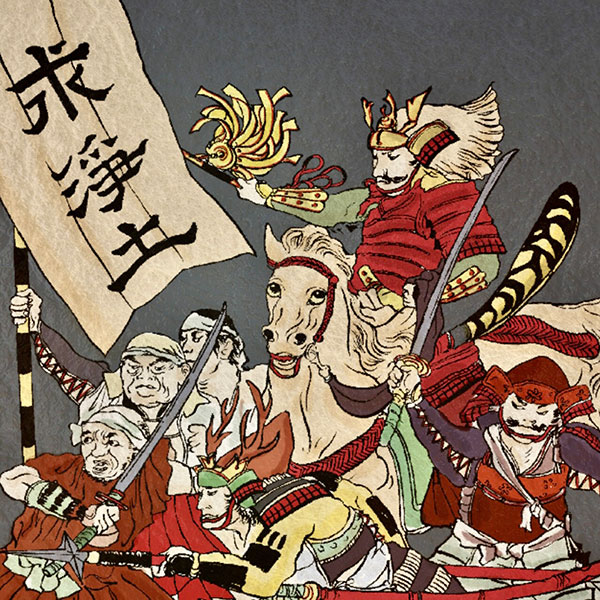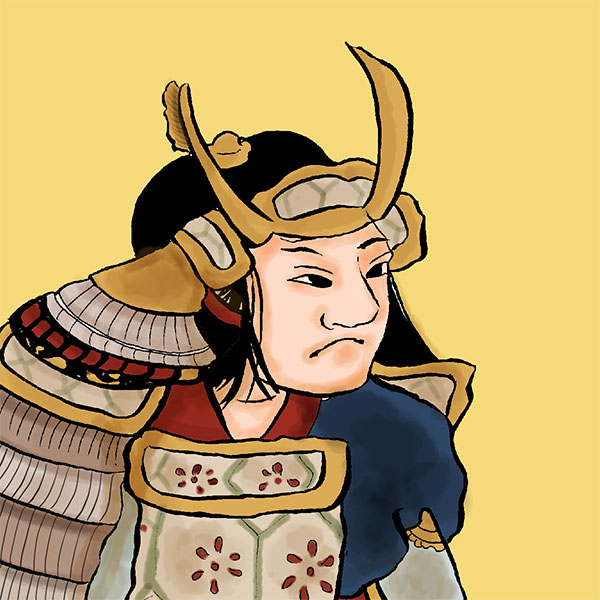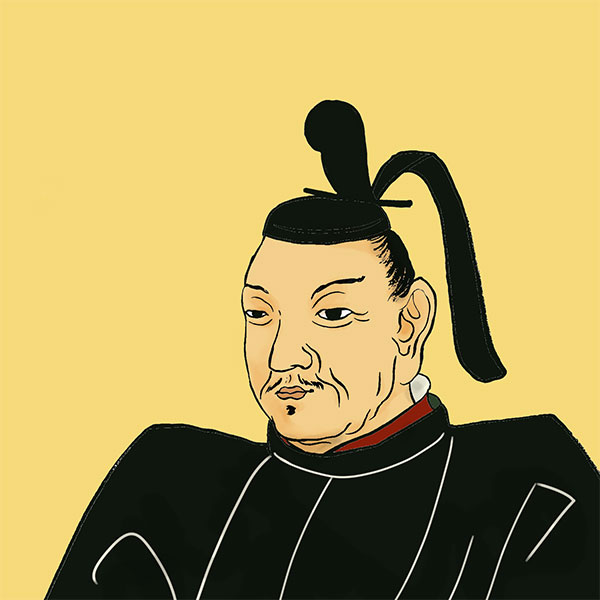Mikawa Ikko Ikki (2/2)The vassals split! Ieyasu is in big trouble

Mikawa Ikko Ikki
- Article category
- case file
- Incident name
- Mikawa Ikko Ikki (1563-1564)
- place
- Aichi prefecture
- Related castles

Okazaki Castle

Nishio Castle
- people involved
A surprising number of military commanders were on Ieyasu's enemy side, and Ieyasu must have had a strong sense of crisis. Could it be that the religious power of the Ikko sect was so strong that it divided the vassals? By the way, if you roughly divide the Tokugawa vassals, senior vassals supported Ieyasu, and others and those who lost in power struggles among senior vassals sided with the Ikko sect.
Local lords such as the Kira clan, the Arakawa clan, and the Sakurai Matsudaira clan, who were the guardians of Mikawa, saw this division of vassals as an opportunity. The Kira clan, who were relatively new vassals, wanted to recover the territory lost to Ieyasu when they became vassals, and the anti-Ieyasu who were not happy with Ieyasu, who became independent from the Imagawa clan and allied with Oda Nobunaga. Members of the country, including the Matsudaira Sakurai clan, joined the Ikko Ikki group and attempted to defeat Ieyasu. Although the Kira clan's movements were targeting the same Ieyasu, there is also a theory that they are not related to the Ikko Ikki due to the timing of the attack and the lack of communication among the groups.
It is not known exactly when the Mikawa Ikko Ikki began, but it is said to have occurred in either June or September. The ikki forces barricaded themselves in temples such as the Honshu temple and the three temples in Mikawa, and the military commanders also holed up in their respective castles. Ieyasu opposed this by deploying the Torii clan at Jogu-ji Temple, the Okubo clan at Katsutoshi-ji Temple, the Fujii Matsudaira clan at Honsho-ji Temple, and the Sakai Masachika at Nishio Castle.
It seems that there were skirmishes between the two sides, but the timing is known to some extent that in October, Matsudaira Ietada and Matsui Tadatsugu on Ieyasu's side attacked Yoshiaki Kira's camp (Nishio City, Aichi Prefecture), and a fierce battle ended in the castle. It is a battle in which we lost. It is assumed that there were several battles like this, but the uprisings did not subside during the 6th year of Eiroku. However, the appearance of the lord Ieyasu himself on the battlefield lowered the morale of the military commanders who had joined the uprising. Many military commanders are returning to Ieyasu's side, saying, ``I cannot bow down to my master!'' Some even run away as soon as they see Ieyasu.
Mikawa Ikko Ikki ③ Battle of Kamiwada
The most fierce battle of the Mikawa Ikko Uprising was the Battle of Kamiwada, which occurred in January 1564. The facts are not clear as various dates and details of the battle are recorded in various documents, but it is believed that the uprising group of Honshuji Temple and Shotoji Temple attacked Kamiwada Fort, which was protected by Tadakatsu and Tadayo Okubo, and a battle broke out. There seems to be no doubt about it.
According to the Sanshu Ikko Soranki, which was compiled in the 18th century, Tadakatsu and Tadayo were both shot in the eye and injured in the battle. When the fort was about to fall, Ieyasu rushed to the rescue from Okazaki Castle (Okazaki City, Aichi Prefecture) and recovered, but was unable to defeat the uprising force and the battle continued for three days. On the 13th, Okubo's party attacked Shotoji Temple, the stronghold of the Ikko Ikki. At this time, Ieyasu was also running for office, but he was attacked by rioters and was hit by a gun. It seems that Ieyasu was not injured because the bullet hit the thick part of his armor, but it seems like he had a very close call. Ieyasu narrowly escaped with his life and moved to Manshoji Temple (Okazaki City, Aichi Prefecture).
Then, on January 15, while the uprising forces at Jogu-ji Temple were fighting against Ieyasu, the uprising forces at Honshu-ji Temple and Shotoji Temple planned to attack Okazaki Castle in the absence of Ieyasu. The battle began at Ohira near Okazaki Castle. Hearing this, Ieyasu set out with his uncle Nobumoto Mizuno to cut off the back of the uprising. A huge battle ensued between the Ikki forces and Batohara, but it was Ieyasu's side that won the fierce battle. The next day, on the 16th, about 130 people had their necks examined. Subsequently, on January 25, Matsudaira Ietada attacked and captured Mutsukuri Castle (Koda-cho, Nukata-gun, Aichi Prefecture), where Natsume Yoshinobu was located.
As this melee continued, Ieyasu persistently persuaded his subordinates to return and succeeded in cutting through the uprising. On the other hand, the uprising group remains disorganized as each temple is not in harmony. Although they were all members of the same Ikko Ikki force, it seems that one reason for this was that the members were diverse, including monks, samurai, farmers, and anti-Ieyasu military commanders who were not disciples.According to one theory, a faction was formed between samurai and farmers. It is said that it was. The absence of a top figure like Ieyasu seemed to have been a contributing factor, and they were at a disadvantage.
Mikawa Ikko Ikki ④ Reconciliation on terms favorable to the Ikki side
Despite losing in battle and some defecting, the Mikawa Ikko Ikki forces proposed a peace treaty to Tokugawa Ieyasu in mid-February. According to "Mikawa Monogatari," the conditions for the uprising were to pardon the participants in the uprising, spare the lives of Masanobu Honda and other uprising leaders, and "keep the temple as it was before," that is, continue to have the right not to enter the temple. We request three things.
Ieyasu does not want to waste any more time on the uprising in the midst of the fight to unify Mikawa. Although there were times when Tokugawa Ieyasu expressed dissatisfaction with the idea of sparing the lives of those responsible for the uprising, in the end Tokugawa Ieyasu agreed to the conditions of peace from the uprising side. At the end of February, the oath was taken back and a peace agreement was reached. As a result of the peace agreement, temples were granted the same right of non-entry as before the uprising. Looking at this result, the ruling is quite lenient on the Ikki side...
As a result of peace, the uprising was disbanded. Among the vassals who sided with the Ikko sect, Moritsuna Watanabe and Yoshinobu Natsume surrendered and returned, while Sadatsugu Hachiya was pardoned and returned. On the other hand, some samurai such as Masanobu Honda, the Kira clan, and the Arakawa clan had their territories confiscated and were forced to leave the country. By the way, after Masanobu Honda moved to Kaga Province, he returned to the Tokugawa family through the intercession of Tadayo Okubo. He will serve as a senior vassal until Ieyasu's death.
Mikawa Ikko Ikki ⑤ Ieyasu’s conversion order showing glimpses of the “old Danuki”
It seemed that the uprising had been resolved peacefully, but after the perpetrators of the uprising left the country, Tokugawa Ieyasu took action. Taking advantage of the fact that the number of hostile samurai had decreased, they forced the temples to convert to other sects and religions. What was the petition? Naturally, the temple side objected, but Ieyasu is said to have declared, ``The temple will remain as it was, returning to the state of the wilderness where there was no temple.''
It's a crazy argument, but even if they tried to rebel, there were no samurai who could serve as a fighting force, and what was left were the disciples, who were mainly farmers. In the end, many of the temples of the Ikko sect were destroyed. The Ikko sect was prohibited from operating in Mikawa Province for about 20 years, until 1583.
Tokugawa Ieyasu after the Mikawa Ikko Ikki uprising
Tokugawa Ieyasu, who quelled the Mikawa Ikko Ikki. By driving away the opposing forces, the unity of the vassals will increase. The lenient policy of relieving the vassals who participated in the uprising made them feel indebted to them. One of the results could be said to be Natsume Yoshinobu, who died in Ieyasu's place at the Battle of Mikatagahara. In addition, by acquiring the territories of the expelled vassals and introducing a system to centrally collect annual taxes, they secured a source of funds, so they had ample supplies. Thus, Ieyasu began his invasion of Higashi Mikawa again. He took control of Mikawa Province and expanded his strategy to conquer Totomi.
Reread the article on the Mikawa Ikko Ikki
- people involved

- WriterNaoko Kurimoto(Writer)I am a former travel industry magazine reporter. I have loved history, both Japanese and world history, since I was a child. I usually enjoy visiting temples and shrines, especially shrines, and often do ``pilgrimages to sacred places'' themed around historical figures. My favorite military commander is Ishida Mitsunari, my favorite castle is Kumamoto Castle, and my favorite castle ruins is Hagi Castle. My heart flutters when I see the ruins of battle castles and the stone walls of castle ruins.







